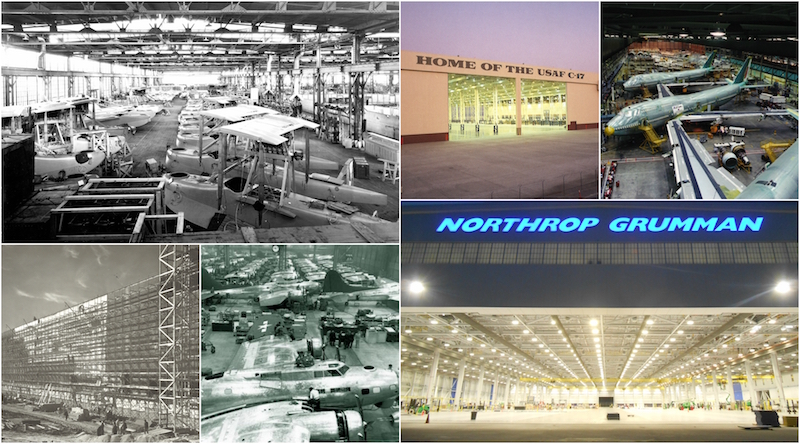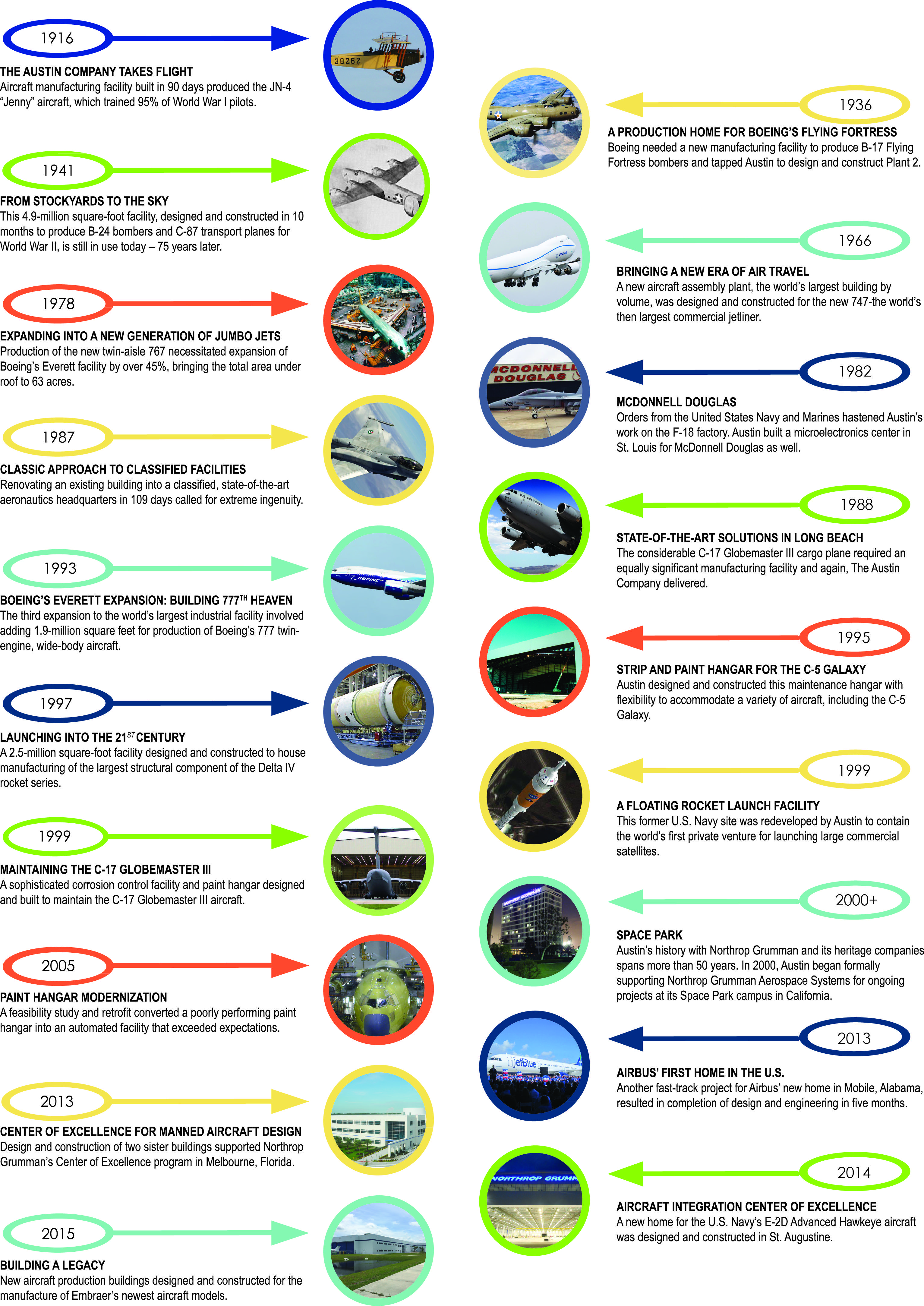One hundred years ago, in 1916, The Austin Company began design and construction on its first of many aircraft assembly plants – the Curtiss Aeroplane and Motor Company plant in Buffalo, N.Y. This was just the beginning of a long list of innovative and successfully designed and constructed complex aircraft facilities that were often completed on a fast-track basis.
Austin’s many innovations along the way contributed to the success of our clients by enabling them to operate in more efficient environments, optimize the flexibility of their operations, and meet aggressive schedules. Austin architects, engineers, and constructors devised many innovations for the aviation sector since its inception, such as bi-fold hangar doors, metal-saving fiberglass wall panels for WWII bomber plants, induced airflows to improve ventilation in large plants, rolling work platforms to speed schedules, and more.
It is a proud history. We like to say that Austin has aviation in our DNA. While Samuel Austin was our founder and established high standards of ethics, values, and quality in our work, his son Wilbert was the innovator and visionary for aviation. Tragically, Wilbert died in a plane crash in Chicago in 1940, but by then, the DNA was well established.
Austin has held a formative role in this dynamic industry: airplanes, airports, engines, hangars, flight kitchens, cargo facilities, rockets, satellites. We have created these facilities in the U.S., Canada, Mexico, Italy, Australia, Greece, UK, Japan, and other locations.
In 100 years, manned flight has evolved from single engine bi-planes to supersonic travel, satellites, and space tourism. Design and construction has gone from pencils, linen, and slide rules to lasers, GPS, and integrated software platforms. Some things remain constant, however; a passion for this industry, an excitement toward how this market inspires and challenges us to innovate and achieve higher goals, and an appreciation of how this market drives us to technical excellence. This is where the DNA shows up, and it carries over into every market and industry we serve.
This historical timeline highlights some of the many aviation and aerospace projects Austin has completed over the past 100 years. It is a proud legacy that we carry on in our daily work.
Learn more at: http://www.theaustin.com/aerospace-defense-aviation
Related Stories
Sponsored | | Nov 12, 2014
Eye-popping façade highlights renovation, addition at Chaffin Junior High School
The new distinctive main entrance accentuates the public face of the school with an aluminum tube “baguette” system.
| Oct 26, 2014
New York initiates design competition for upgrading LaGuardia, Kennedy airports
New York Gov. Andrew Cuomo said that the state would open design competitions to fix and upgrade New York City’s aging airports. But financing construction is still unsettled.
| Oct 16, 2014
Perkins+Will white paper examines alternatives to flame retardant building materials
The white paper includes a list of 193 flame retardants, including 29 discovered in building and household products, 50 found in the indoor environment, and 33 in human blood, milk, and tissues.
| Oct 12, 2014
AIA 2030 commitment: Five years on, are we any closer to net-zero?
This year marks the fifth anniversary of the American Institute of Architects’ effort to have architecture firms voluntarily pledge net-zero energy design for all their buildings by 2030.
| Sep 24, 2014
Architecture billings see continued strength, led by institutional sector
On the heels of recording its strongest pace of growth since 2007, there continues to be an increasing level of demand for design services signaled in the latest Architecture Billings Index.
| Sep 22, 2014
4 keys to effective post-occupancy evaluations
Perkins+Will's Janice Barnes covers the four steps that designers should take to create POEs that provide design direction and measure design effectiveness.
| Sep 22, 2014
Sound selections: 12 great choices for ceilings and acoustical walls
From metal mesh panels to concealed-suspension ceilings, here's our roundup of the latest acoustical ceiling and wall products.
| Sep 15, 2014
Ranked: Top international AEC firms [2014 Giants 300 Report]
Parsons Brinckerhoff, Gensler, and Jacobs top BD+C's rankings of U.S.-based design and construction firms with the most revenue from international projects, as reported in the 2014 Giants 300 Report.
| Sep 9, 2014
Using Facebook to transform workplace design
As part of our ongoing studies of how building design influences human behavior in today’s social media-driven world, HOK’s workplace strategists had an idea: Leverage the power of social media to collect data about how people feel about their workplaces and the type of spaces they need to succeed.
| Sep 8, 2014
First Look: Foster + Partners, Fernando Romero win competition for Mexico City's newest international airport
Designed to be the world’s most sustainable airport, the plan uses a single, compact terminal scheme in lieu of a cluster of buildings, offering shorter walking distances and fewer level changes, and eliminating the need for trains and tunnels.

















